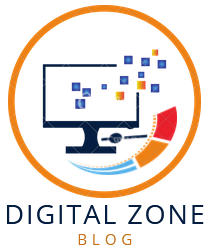Technology continues to reshape various facets of the healthcare industry, and billing services in internal medicine and laboratories are no exception. The integration of innovative technologies is streamlining processes, enhancing accuracy, and improving efficiency in billing practices. This article explores the impact of technology innovation on internal medicine and laboratory billing services, highlighting key advancements and their benefits.

Automation in Billing Processes:
One of the significant advancements in internal medicine billing services and laboratory billing services is the automation of repetitive tasks. Technology-driven systems can now automate data entry, coding, claim submissions, and payment processing. This automation reduces manual errors, speeds up billing cycles, and frees up staff to focus on more critical tasks, ultimately improving revenue cycle management for healthcare providers.
Electronic Health Records (EHR) Integration:
Integration of electronic health records (EHR) with billing systems has revolutionized internal medicine and laboratory billing services. EHR platforms capture patient data, diagnoses, and treatment details, which can seamlessly transfer to billing systems for accurate invoicing. This integration ensures that billing codes align with provided services, minimizing discrepancies and ensuring compliance with coding standards.
Artificial Intelligence (AI) and Machine Learning (ML) Solutions:
AI and ML technologies are transforming internal medicine and laboratory billing services by analyzing vast amounts of data to identify patterns and trends. AI-powered systems can detect coding errors, flag potential claim denials, and optimize billing workflows based on historical data. By leveraging AI and ML, billing services can enhance accuracy, reduce billing cycle times, and increase revenue capture for healthcare providers.
Blockchain for Data Security:
Blockchain technology is increasingly being adopted to secure sensitive data in internal medicine and laboratory billing services. Blockchain offers immutable and transparent record-keeping, ensuring the integrity and security of billing information. By implementing blockchain solutions, billing services can protect patient data from cyber threats, mitigate fraud risks, and maintain compliance with data privacy regulations.
Telehealth Billing Solutions:
The rise of telehealth services has led to the development of specialized billing solutions tailored to virtual healthcare visits. Internal medicine and laboratory billing services are integrating telehealth billing functionalities to accommodate remote consultations and diagnostic services. These solutions enable accurate coding for telehealth encounters, facilitating seamless reimbursement and improving access to care for patients.
Mobile Applications for Billing Accessibility:
Mobile applications are empowering healthcare providers to access billing services on the go. Internal medicine and laboratory billing services now offer mobile apps that enable providers to review patient billing information, submit claims, and track payments from their smartphones or tablets. These apps enhance convenience, streamline communication between providers and billing teams, and support timely billing activities.
Data Analytics for Performance Insights:
Advanced data analytics tools are being utilized to gain insights into the performance of internal medicine and laboratory billing services. By analyzing billing data, providers can identify revenue trends, monitor key performance indicators (KPIs), and pinpoint areas for optimization. Data-driven insights help billing services adapt strategies to maximize revenue capture, minimize denials, and improve overall financial performance.
Predictive Analytics for Revenue Forecasting:
Predictive analytics models are revolutionizing revenue forecasting in internal medicine and laboratory billing services. By analyzing historical billing data and external factors such as payer trends and regulatory changes, predictive analytics can forecast future revenue streams with greater accuracy. These insights enable proactive decision-making, resource allocation, and financial planning for healthcare providers.
Cloud-Based Billing Platforms:
Cloud-based billing platforms offer scalability, flexibility, and accessibility for internal medicine and laboratory billing services. By migrating billing operations to the cloud, providers can reduce infrastructure costs, eliminate maintenance hassles, and access billing data securely from anywhere with an internet connection. Cloud-based platforms also facilitate seamless collaboration among billing teams and integration with other healthcare systems.
Patient Self-Service Portals:
Patient self-service portals are empowering individuals to manage their billing information and payments conveniently online. Internal medicine and laboratory billing services are implementing patient portals that allow patients to view statements, make payments, and communicate with billing representatives electronically. These portals improve patient satisfaction, reduce administrative burden on staff, and accelerate payment collections for healthcare providers.
Compliance Management Solutions:
Technology-driven compliance How Technology Innovation is Revolutionizing Internal Medicine and Laboratory Billing Services solutions are ensuring adherence to regulatory requirements in internal medicine and laboratory billing services. These solutions automate compliance monitoring, facilitate audit trails, and provide real-time updates on regulatory changes impacting billing practices. By staying compliant with regulations such as HIPAA and Medicare guidelines, billing services mitigate risks and maintain trust with stakeholders.
Integration with Revenue Cycle Management (RCM) Systems:
Integration with comprehensive revenue cycle management (RCM) systems streamlines end-to-end billing processes for internal medicine and laboratory services. These integrated platforms unify billing, coding, claims management, and payment reconciliation within a single interface. Seamless integration enhances workflow efficiency, reduces manual errors, and optimizes financial performance across the revenue cycle.
Conclusion:
Technology innovation is revolutionizing internal medicine and laboratory billing services, offering unprecedented efficiency, accuracy, and security. Automation, EHR integration, AI/ML solutions, blockchain technology, and telehealth billing are among the key advancements driving transformation in billing practices. By embracing these innovations, healthcare providers can optimize revenue cycles, improve patient care, and adapt to the evolving landscape of healthcare billing

1 thought on “How Technology Innovation is Revolutionizing Internal Medicine and Laboratory Billing Services”
Comments are closed.